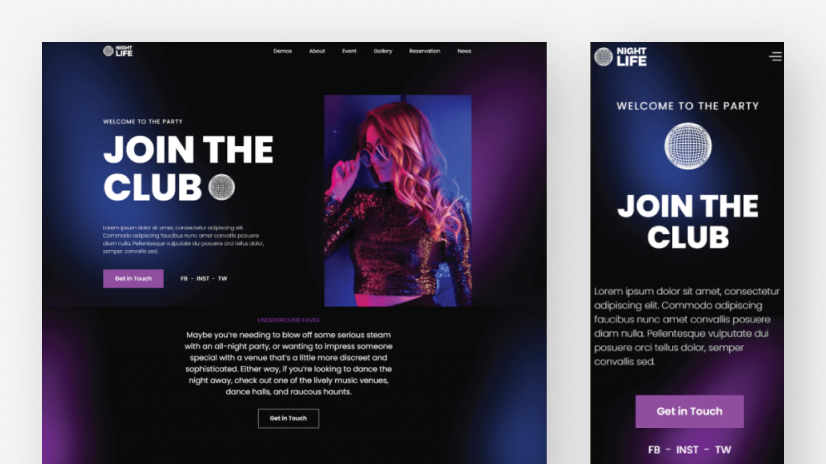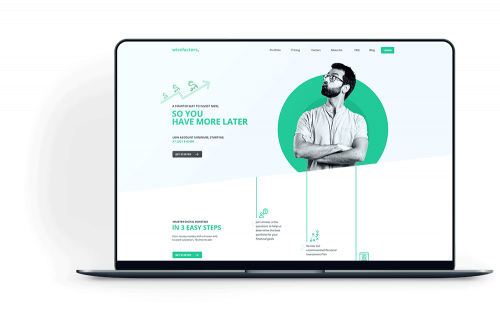The Effect of Individual Experience on Your Website Design Approach
Wiki Article
Maximize Engagement: Proven Techniques for Exceptional Website Layout
Comprehending just how effective navigating, visual power structure, and content optimization merge to enhance customer involvement is essential for any type of company looking for to make a meaningful impact. As we explore different tried and tested techniques that add to superior site layout, the interaction in between these components exposes not just ideal techniques yet additionally ingenious strategies that can elevate customer experience.Relevance of User-Centric Design
User-centric layout is crucial in developing efficient websites, as it prioritizes the needs and choices of completion customer from the actual beginning of the style procedure (website design). This approach ensures that the web site is tailored to give an ideal experience for individuals, assisting in interaction and contentment. By recognizing customer behaviors, objectives, and discomfort points, developers can develop user interfaces that resonate with their target audience and promote a sense of linkExecuting user-centric design entails comprehensive study, including individual personas and journey mapping, which help in recognizing the certain requirements of different individual sections. This data-driven approach enables for notified choices pertaining to design, functionality, and material, inevitably causing the production of a much more intuitive and attractive internet experience.
Furthermore, a user-centric approach advertises availability and inclusivity, ensuring that websites accommodate diverse customer abilities and preferences. This not only improves customer experience but additionally broadens the audience reach. In a competitive electronic landscape, focusing on user-centric layout is not simply advantageous; it is important for driving interaction, decreasing bounce rates, and promoting user commitment. Efficient websites are those that resonate with individuals, making user-centric layout a basic principle for successful web development.
Reliable Navigating Approaches
A well-structured navigating system is a cornerstone of reliable site design, developing straight on the concepts of user-centric design. Efficient navigation allows customers to locate information rapidly and intuitively, improving their general experience and encouraging longer sees.To achieve this, think about carrying out a clear power structure in your navigation menu. Main groups must be instantly noticeable, while subcategories can be exposed with dropdowns or expanding food selections. This organization helps users expect where they might discover relevant content, reducing aggravation.

Consistency is important; use acquainted terms and style aspects throughout the website to prevent confusion. Breadcrumb trails can likewise be advantageous, giving individuals with contextual awareness of their place within the website and enabling very easy backtracking.
Finally, ensure that your navigation is mobile-friendly and responsive. As even more customers access sites by means of smart phones, adapting your navigating for smaller sized screens is crucial for keeping use and accessibility. By prioritizing these approaches, you can produce a seamless navigating experience that keeps individuals involved.
Visual Pecking Order and Format
Developing a clear aesthetic power structure is vital for leading customers via an internet site's material successfully. A well-structured layout not only enhances individual experience but likewise affects exactly how visitors perceive and interact with details. By purposefully using size, contrast, spacing, and shade, designers can develop prime focus that draw attention to the most vital components, such as headings, phones call to activity, or images.Integrating a grid look at here system can better improve visual pecking order by supplying a regular structure for web content positioning. This company enables individuals to navigate the site intuitively, making it easier to absorb info (website design). In addition, using whitespace is essential; it produces breathing space around elements, minimizing cognitive overload and highlighting vital content

Material Optimization Strategies
While developing aesthetically attractive layouts is very important, the efficiency of a web site inevitably depends upon just how well its content is enhanced for both online search engine and customer interaction. Web content optimization involves a critical method that improves presence and significance, eventually driving website traffic and keeping visitors.First, keyword study is fundamental. Recognizing relevant key words that line up with customer intent enables the combination of these terms normally into headings, text, and meta descriptions. This not just aids in ranking higher on search engines but additionally boosts the quality of content for customers.

Moreover, enhancing for local SEO can increase engagement for region-specific target markets. Including local key words and producing material that addresses regional passions improves importance.
Finally, frequently upgrading material guarantees that it stays useful and fresh, attracting both search engines and returning individuals. By concentrating on these content optimization methods, organizations can produce a compelling online presence that promotes communication and drives conversions.
Responsive and Mobile-First Approaches
Individual engagement and material exposure are significantly you could check here affected by the ability of a web site to adjust flawlessly across various devices. With the rise of mobile browsing, employing responsive style and mobile-first techniques has actually come to be essential for effective web development. Responsive design guarantees that a single web site design changes fluidly to various display sizes, from desktop computers to mobile phones, therefore giving a regular individual experience.On the various other hand, a mobile-first technique focuses on the mobile user experience throughout the design procedure. Deliberately for smaller sized screens at first, developers can concentrate on important attributes and enhance efficiency, ensuring that customers are not overwhelmed by unnecessary content. This strategy also enhances loading times, which is important for maintaining site visitors.
Both approaches contribute to greater interaction rates, as users are more probable to connect with a website that is user-friendly and aesthetically attractive. Search engines prefer mobile-optimized sites in positions, therefore enhancing presence. In recap, adopting receptive and mobile-first design strategies is critical for taking full advantage of customer interaction and making sure that web content remains accessible and effective throughout all devices.
Final Thought
To conclude, the implementation of user-centric design concepts is essential for taking full advantage of engagement in website style. Efficient navigation methods, a distinct visual power structure, and optimization of material substantially boost user experience. Additionally, embracing receptive and mobile-first techniques guarantees accessibility throughout different devices. Jointly, these strategies not only promote info access but likewise foster deeper customer communication, eventually adding to higher engagement prices and overall website success. Focusing on these aspects is vital for reliable web site design.As we explore numerous proven strategies that contribute to outstanding web site design, the interplay between these aspects reveals not just finest methods however additionally innovative approaches that can raise user experience.User-centric design is crucial in producing reliable sites, as it prioritizes the needs and preferences of the end customer from the very beginning of the layout procedure. Reliable web sites are those that reverberate with customers, making user-centric design an essential concept for successful web advancement.
Responsive layout makes certain that a single internet site design changes fluidly to different display sizes, from desktops to smart devices, consequently supplying a regular user experience.
In summary, adopting mobile-first and responsive design techniques is essential for making the most of user interaction and ensuring that web content stays easily accessible and reliable throughout all gadgets.
Report this wiki page